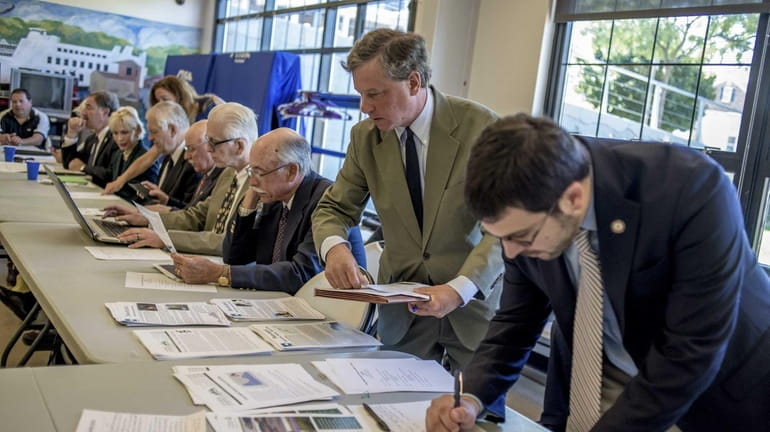Lawmakers air concerns about Long Island Sound

New York and Connecticut elected officials meet with conservation associations and lobstermen to discuss issues of mutual concern regarding Long Island Sound in Port Jefferson. (Sept. 25, 2013) Credit: Johnny Milano
Problems such as pesticide contamination, algae blooms and declining lobster populations imperil Long Island Sound, elected officials and environmentalists from New York and Connecticut said Wednesday.
Officials, meeting in Port Jefferson at the second annual Bi-State Long Island Sound Roundtable, discussed strategies for protecting the estuary -- a source of jobs and recreation for residents of both states.
"There is a sense of urgency that we need to gather together," said Assemb. Steven Englebright (D-Setauket) during a news conference before the meeting at Port Jefferson's Village Center. "The legacy of the Long Island Sound is something that our generation will probably determine the fate of."
The meeting was an informal forum facilitated by the Citizens Campaign for the Environment, which backs efforts to improve water quality.
About a half-dozen Connecticut officials arrived yesterday by ferry, joining Long Island officials such as state Sen. Kenneth LaValle (R-Port Jefferson), Brookhaven Supervisor Edward P. Romaine, Suffolk County Legis. Kara Hahn (D-Setauket) and leaders from Westchester County.
Hahn, chairwoman of the legislature's environment committee, said Sound protection would be good for tourism. "Every day that a beach is closed is one more day we don't get to enjoy being in the water," she said.
Officials planned to discuss the impact of overdevelopment and the effects of natural disasters such as superstorm Sandy on coastal areas along the sound.
Fisherman-turned Connecticut state Rep. Terry Backer (D-Stratford), leader of the East Norwich-based environmental organization Long Island Soundkeeper, said pollutants such as nitrogen from septic systems and fertilizers threaten wildlife in the sound.
"We have used the Long Island Sound for 150 years as a chemistry experiment," he said.
